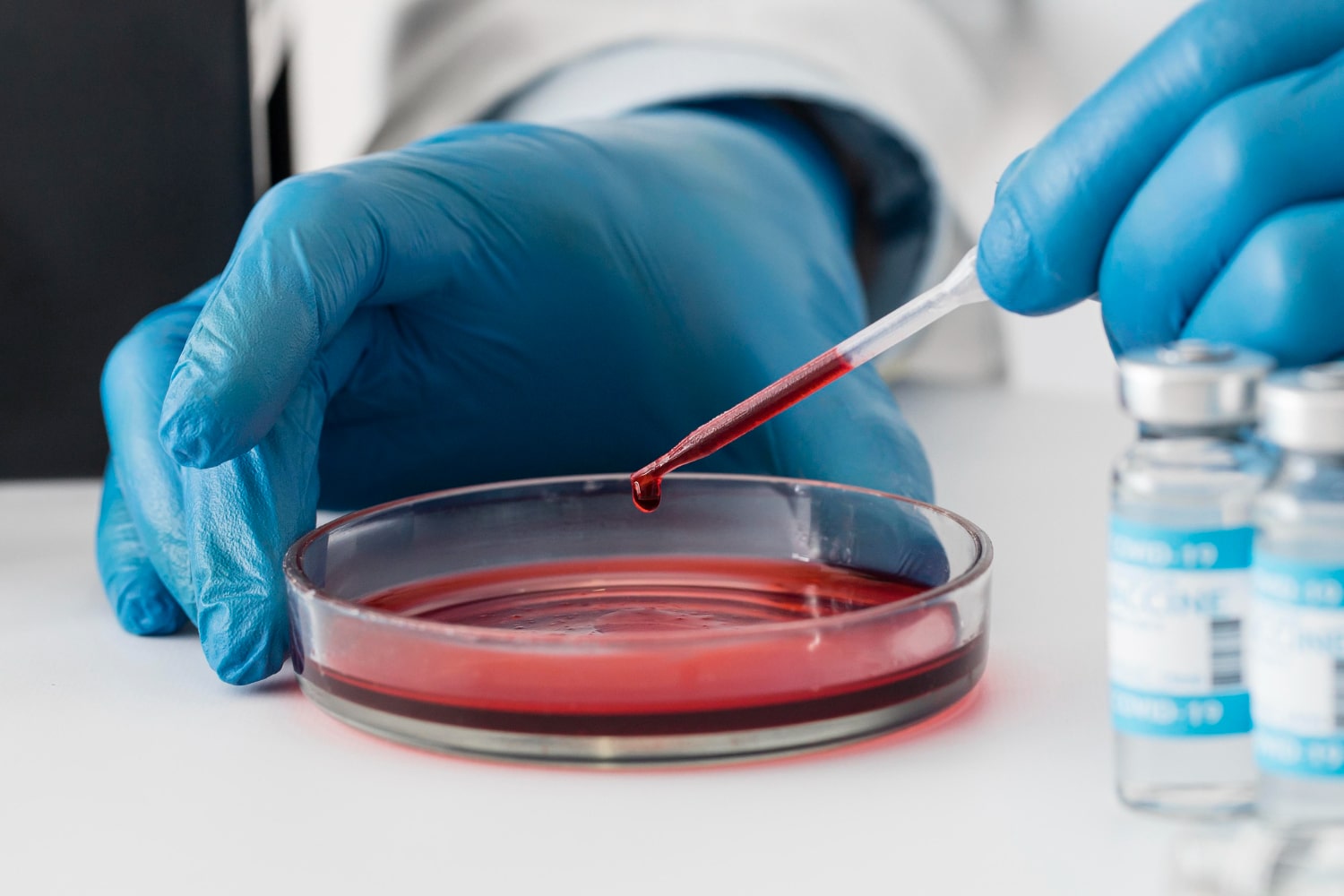Oxford University Fellow and Diamond User recognized for his innovative, sustainable Na-ion battery materials research by Forbes Magazine
Robert House, a Senior Research Fellow at Oxford University working on the next generation of rechargeable battery materials at Diamond has been selected as one of Forbes Magazine’s prestigious 30 people to watch under 30 in Europe Science and Healthcare. Forbes writers and editors comb through thousands of online submissions, as well as tap industry […]

Robert House, a Senior Research Fellow at Oxford University working on the next generation of rechargeable battery materials at Diamond has been selected as one of Forbes Magazine’s prestigious 30 people to watch under 30 in Europe Science and Healthcare. Forbes writers and editors comb through thousands of online submissions, as well as tap industry sources, academics, VCs and list alumni for recommendations. Candidates are then evaluated by Forbes staff and a panel of independent, expert judges on a variety of factors, including funding, revenue, social impact, scale, inventiveness and potential. https://forbes.com/profile/robert-house/

Credit: Diamond Light Source
Robert House, a Senior Research Fellow at Oxford University working on the next generation of rechargeable battery materials at Diamond has been selected as one of Forbes Magazine’s prestigious 30 people to watch under 30 in Europe Science and Healthcare. Forbes writers and editors comb through thousands of online submissions, as well as tap industry sources, academics, VCs and list alumni for recommendations. Candidates are then evaluated by Forbes staff and a panel of independent, expert judges on a variety of factors, including funding, revenue, social impact, scale, inventiveness and potential. https://forbes.com/profile/robert-house/
Robert leads a research group focused on application-inspired Research and Development (R&D) in the science of battery materials. In 2021, he secured £500k in fellowship funding from the Royal Academy of Engineering and £50k from the University of Oxford to launch a research program to develop innovative, sustainable Na-ion battery materials. The groups wants to develop sodium ion batteries as a cheaper and easier to source alternative to lithium. These promise to be significantly lower cost than conventional Li-ion batteries, and do not rely on resource-constrained elements such as lithium and cobalt. The group has been working with the UK’s Synchrotron, Diamond Light Source using its I21 RIXS beamline to help them identify two unique energy storage mechanisms which if used in the right way could deliver improvements in Na-ion cathode materials.
Colleagues encouraged Robert to put his name forward for consideration and was quickly shortlisted and invited to provide further information about his research, ambitions, awards, honours, publications and patents. Commenting on his selection and ambitions; “I’m thrilled to be listed among some of Europe’s top young scientists and innovators under 30. To tackle the climate crisis, we must move away from burning petrol and diesel in our vehicles as a matter of urgency. Electric vehicles (EVs) are the next best alternative, but they currently rely on Li-ion battery technology which is expensive and can make up to half of the cost of buying the car. To make more affordable EVs, and to reduce our dependence on critical elements, we have to look beyond Li-ion to other rechargeable batteries. The future of batteries is coming: Na-ion and beyond.”
The group uses Diamond’s I21 RIXS beamline. This is a dedicated Resonant Inelastic soft X-ray Scattering (RIXS) beamline that provides a highly monochromatised, focused and tunable X-ray beam onto materials. It offers a powerful tool to be able to probe changes to the electronic structure of oxygen when it takes part in charge storage reactions. “Over the last few years, together with the beamline team at I21, Prof Sir Peter Bruce and his team and Faraday Institution researchers on the CATMAT project, we have used RIXS to develop a detailed understanding of the mechanism by which oxygen is able to store energy reversibly in the cathode. We have been able to identify two unique mechanisms which if used in the right way could deliver improvements in the energy density of cathode materials,” explains Robert.
He adds that while sodium-ion batteries are an attractive option as they can be made cheaply and entirely from earth-abundant elements, they still lag behind Li-on performance. A major limitation for sodium is the cathode material as most do not store as much energy as their lithium counterparts. Robert’s group are discovering brand new cathode materials for Na-ion cells made from earth-abundant precursors such as salt and rust. By incorporating these minerals together using novel synthesis approaches, they are targeting new compounds which should exhibit comparable performance to state-of-the-art Li-ion cathodes such as the lithium iron phosphate (LiFePO4) battery.
Regular battery cathodes work by using the transition metal ions in the structure to store and release electrons as the Li or Na ions are shuttled in and out. The new Na-ion materials the group is investigating are able to store additional electrons using the oxygen ions in the material – this could help to overcome the energy density limitations sodium cathodes face.
Forbes Lists All final listers must be 29 or younger as of March 7, 2023. The judges for the 30 Under 30 Europe Science & Healthcare list were Sona Chandra, Jonathan Dickinson, Linda Partridge and Sabina Wizander. 30 Under 30 – Europe – Science & Healthcare (2023)
Relevant papers authored by Robert House et al;
https://www.nature.com/articles/s41560-023-01211-0 (February 2023)
https://www.nature.com/articles/s41560-021-00780-2
https://www.nature.com/articles/s41560-020-00697-2
https://www.nature.com/articles/s41586-019-1854-3
https://www.diamond.ac.uk/Home/News/LatestNews/2020/21-09-20.html
https://www.diamond.ac.uk/Science/Research/Highlights/2019/role-of-superstructure-in-first-cycle-voltage-loss-in-Li-ion-batteries.html
ENDS
For further information: Please contact Diamond Communications: Lorna Campbell +44 7836 625999 or Isabelle Boscaro-Clarke +44 1235 778130 Diamond Light Source: www.diamond.ac.uk Twitter: @DiamondLightSou
Diamond Light Source I21: Resonant Inelastic X-ray Scattering (RIXS) I21 is a dedicated Resonant Inelastic soft X-ray Scattering (RIXS) beamline that provides a highly monochromatised, focused and tunable X-ray beam onto materials, while detecting and energy-analysing scattered X-rays using a spatially-resolved two-dimensional detector. By studying the energy and momentum differences between the incident and the outgoing X-rays, one can obtain information such as the local lattice structure (local crystal field), electron orbitals (orbital excitations), collective lattice vibration (phonons), magnetic (spinons/magnons) and charge excitations of the material under investigation.
Diamond Light Source provides industrial and academic user communities with access to state-of-the-art analytical tools to enable world-changing science. Shaped like a huge ring, it works like a giant microscope, accelerating electrons to near light speeds, to produce a light 10 billion times brighter than the Sun, which is then directed off into 33 laboratories known as ‘beamlines’. In addition to these, Diamond offers access to several integrated laboratories including the world-class Electron Bio-imaging Centre (eBIC) and the Electron Physical Science Imaging Centre (ePSIC).
Diamond serves as an agent of change, addressing 21st century challenges such as disease, clean energy, food security and more. Since operations started, more than 16,000 researchers from both academia and industry have used Diamond to conduct experiments, with the support of approximately 760 world-class staff. Almost 12,000 scientific articles have been published by our users and scientists.
Funded by the UK Government through the Science and Technology Facilities Council (STFC), and by the Wellcome Trust, Diamond is one of the most advanced scientific facilities in the world, and its pioneering capabilities are helping to keep the UK at the forefront of scientific research.
Diamond was set-up as an independent not for profit company through a joint venture, between the UKRI’s Science and Technology Facilities Council and one of the world’s largest biomedical charities, the Wellcome Trust – each respectively owning 86% and 14% of the shareholding.
What's Your Reaction?

































